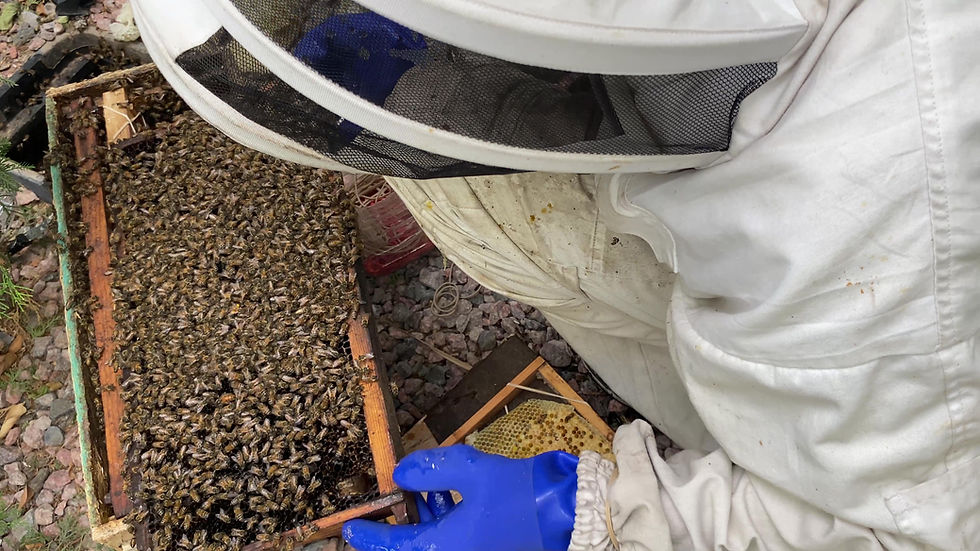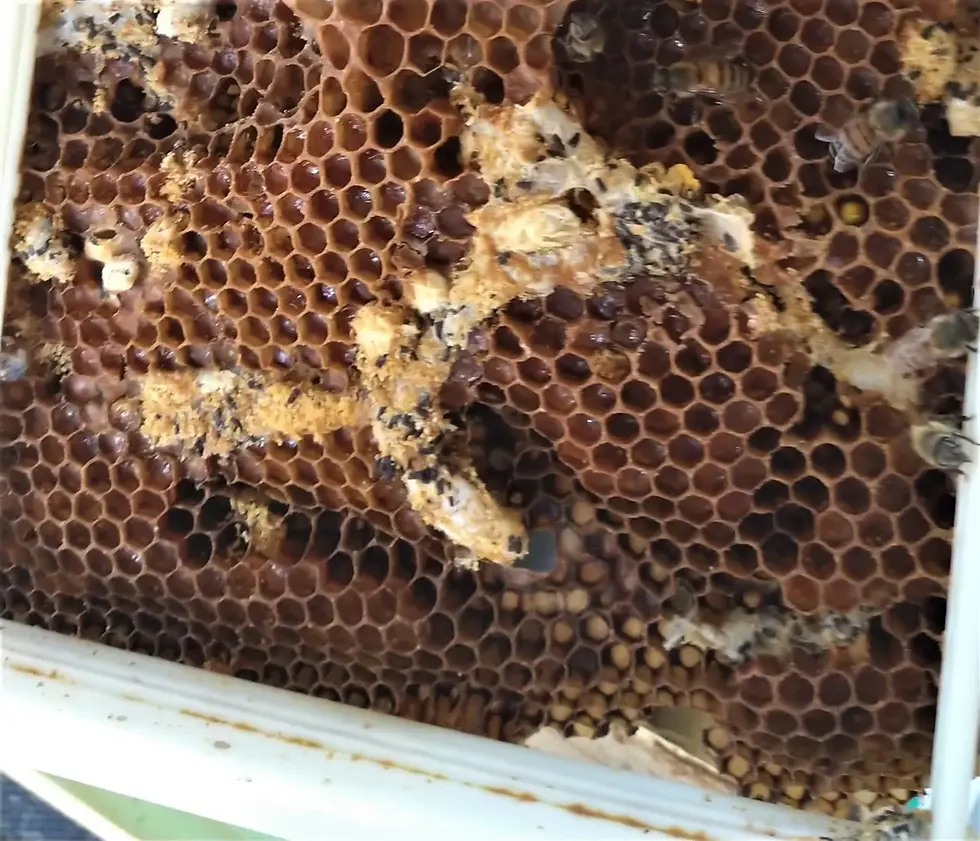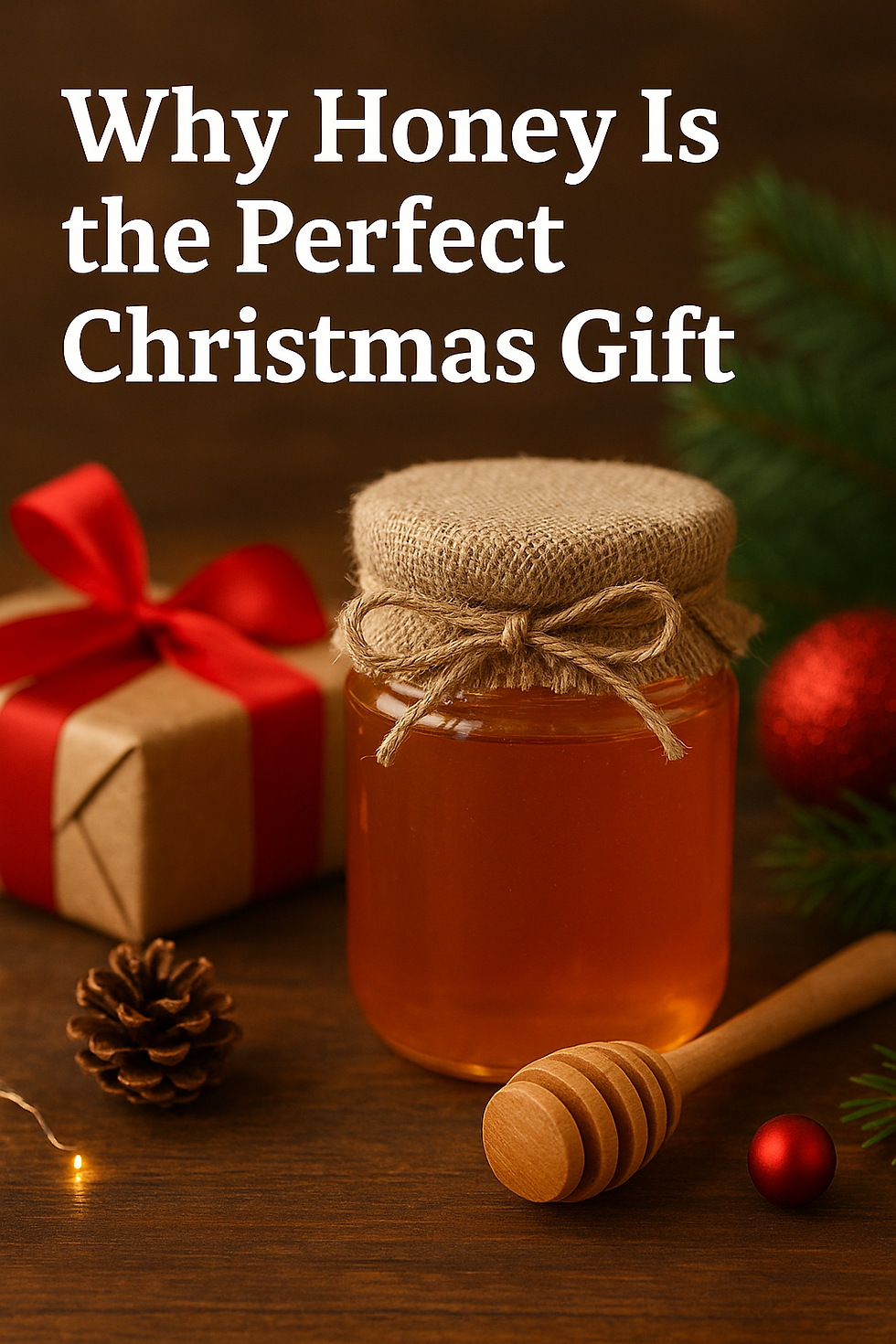What to Do with the Honey Frames After Honey Extraction?
- Pete Rizzo

- Oct 26
- 5 min read

We've just finished extracting honey and are feeling relief and exhaustion.
But the job isn’t over yet. Those sticky frames we've pulled from the extractor still need proper care before we can stash them away.
What we do next can make the difference between clean, ready-to-go comb next spring, or a wax moth nightmare waiting (and it will) happen.
At Vegas Bees, we’ve learned that post-extraction management can save hours of work later and keep your bees healthier long term. Here’s our step-by-step approach that reflects how we beekeepers actually handle our gear once the last drop of honey is bottled.
Let Your Bees Do the Cleanup Work
Bees are incredible housekeepers, and they’re more than happy to clean up sticky frames for you. Instead of washing or scraping them, give the bees a shot at finishing the job.
The best way to do it:
Return wet frames to your strong colonies. Set the super directly on top of the hive in the evening. Doing it late in the day reduces the risk of robbing.
Add an empty box as a spacer. This keeps the frames above the brood area and avoids bees gluing everything together with burr comb.
Leave them for 24 to 36 hours. By then, the frames will be spotless. You’ll find bees have polished every cell like new.
Some beekeepers try to leave wet frames out in the open, but that’s a mistake in our opinion. It sparks robbing, draws wasps, and can trigger chaos across the entire apiary. Keep cleanup inside the hive where it’s controlled and safer.

Prevent Wax Moth Damage Before It Starts
Once the frames are dry, wax moth prevention should be your top priority. Wax moths love old comb, especially if it’s been through brood cycles or still smells like honey. Even a single female moth can destroy an entire stack in weeks.
There are two main ways to protect your comb, depending on your climate and available space. We only go with freezing.
Freeze the Frames
This method is ideal for beekeepers everywhere.
Place frames or entire supers in a chest freezer for at least 48 hours.
After freezing, let them come to room temperature while sealed in plastic bags to prevent condensation.
Store them in airtight bins or tightly wrapped supers until you’re ready to reuse them.
Freezing kills wax moth eggs and larvae before they hatch, giving you peace of mind through the off-season.
Inspect your stored equipment monthly. If you see webbing or larvae, pull the affected frames and refreeze them.

Evaluate Which Frames Are Worth Keeping
Not every piece of comb deserves to make it to next season. Comb is valuable, but it doesn’t last forever.
Light, clean comb from honey-only supers can be reused multiple years. It’s efficient and saves bees the energy of drawing fresh wax.
Dark, brood-stained comb should be retired after several seasons. Over time, it absorbs residues, becomes brittle, and can harbor pathogens like Nosema spores or foulbrood bacteria.
Old frames can be melted down for wax blocks or candles, while the wood can be scraped and reused.
A simple rule: if the frame looks tired, replace it. Clean, fresh comb supports healthier, more productive bees.

Manage Sticky Equipment the Smart Way
Honey extraction leaves everything coated and sticky. Extractor walls, uncapping knives, buckets, you name it. Rather than rinsing immediately, you can turn cleanup into a bee-friendly event.
Here’s a simple system:
Carry your sticky tools and boxes a few hundred feet away from your hives.
Set them out in the late afternoon when flight activity is slowing down.
Let the bees clean them overnight. By morning, they’ll be spotless.
Afterward, wash everything with warm water and mild soap, then let it air dry completely before storing. This not only keeps pests away but prevents mold and fermentation odors from developing.
Store Your Equipment Right
Proper storage keeps your gear in good shape and saves time when you gear up for spring.
Label your supers. Write the year and extraction date directly on the wood so you can rotate them in order next season.
Stack off the ground. Use pallets or shelving to avoid moisture wicking up from concrete floors.
Cover with a breathable tarp. You want to keep dust out while allowing airflow.
Keep them out of direct sun. Excessive heat can warp frames and soften wax.
Taking ten extra minutes to organize now means you won’t be fighting stuck boxes or warped comb next season.
Think Ahead to the Next Honey Flow
If you manage your frames properly, you’re setting yourself up for a stronger start next year.
Clean, intact comb gives your bees an immediate advantage, they can fill and cap honey far faster than if they had to draw new wax.
It also saves you time. When the nectar starts flowing, you’ll be able to focus on inspections and swarm prevention instead of scrambling to rebuild damaged equipment.
Our Final Thoughts
Dealing with honey frames after extraction might feel like one more stair to climb when you’re already tired, sticky, and ready to be done. But it’s a crucial step in keeping your operation clean, healthy, and efficient.
Whether you’re managing five hives or fifty, the same principle applies: a few hours of smart handling now can save you weeks of trouble later.
At Vegas Bees, we’ve seen it time and again, careful post-extraction management leads to stronger colonies and smoother seasons. It’s the kind of quiet work that doesn’t show up in the honey jar but pays off in every healthy hive you open next spring.
Betsy & Pete
🐝Las Vegas’s All-Natural Live Bee Removal Team
About Us: The Authors

We’re Betsy and Pete - Beekeepers on a Mission in Las Vegas
We’re not just in the bee business, we’re in the bee-saving business. Trained by a master beekeeper and backed by hundreds of successful removals, we are dedicated to rescuing and relocating honey bees with care and precision.
Every swarm we save and every hive we manage reflects our deep love for the bees.
At our Joshua Tree Preserve in Arizona, we care for dozens of thriving hives. Some wild, some honey-bearing, and all are part of our commitment to ethical, sustainable beekeeping.
Why Vegas Bees? Because We Never Stop Learning or Caring
Beekeeping is always evolving, and so are we. We stay on the cutting edge by continuing our education, connecting with fellow beekeepers, and refining our beekeeping practices and techniques to ensure the best outcomes for both bees and people.
Whether it’s advanced bee removal strategies or the latest natural methods, we’re always one step ahead.
We’re also proud to support the beekeeping community with high-quality beekeeping supplies for everyone. If you’re ready to suit up and start your journey, we’ve got what you need.
.png)


